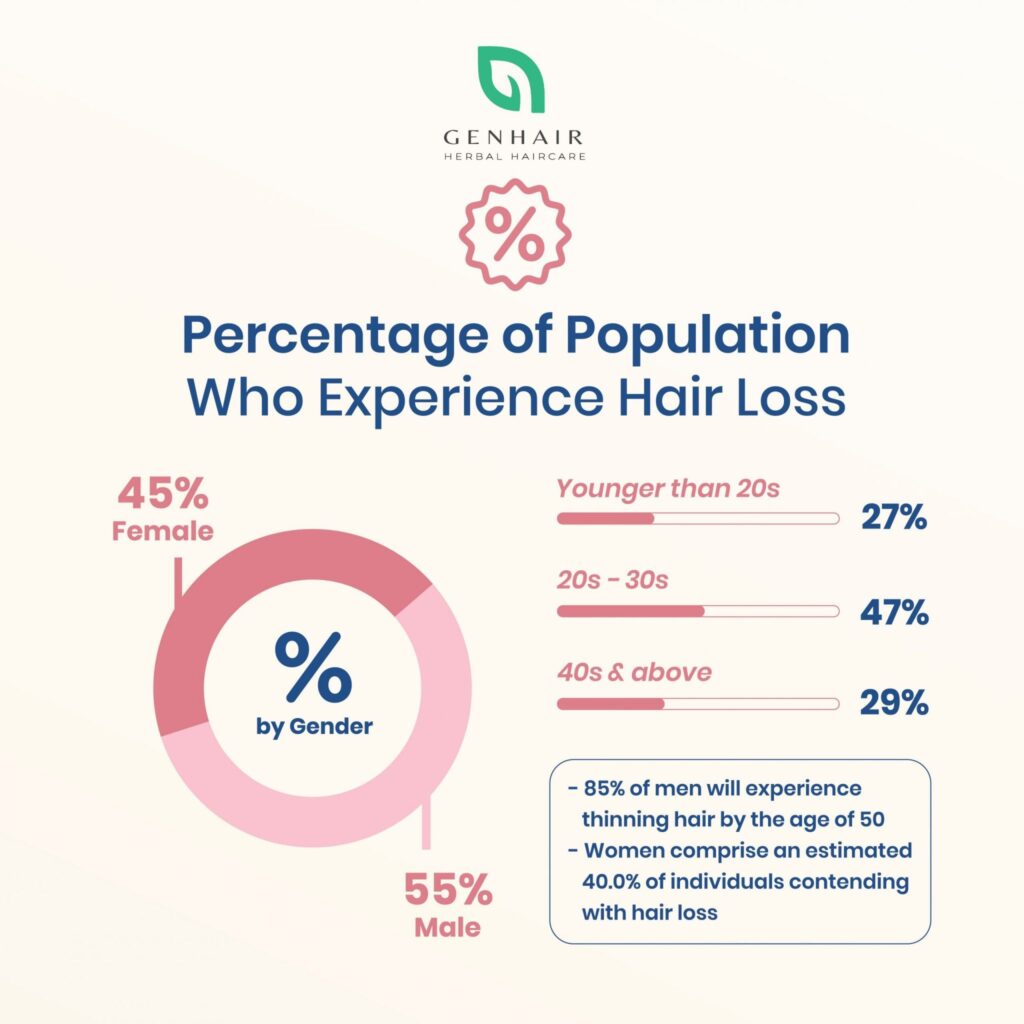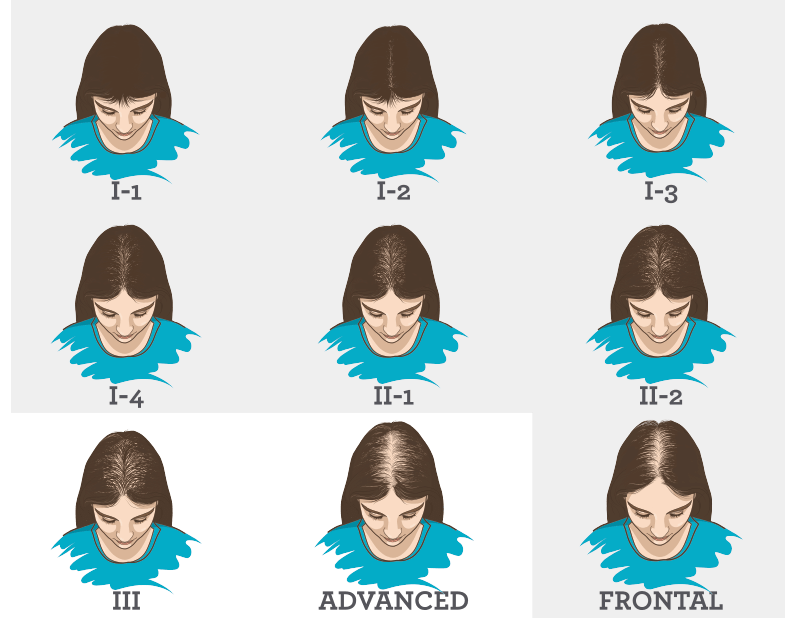What is the difference between Male Pattern hair loss and Female Pattern hair loss
Many people are wondering what is the difference between Male Pattern hair loss and Female Pattern hair loss and how does it will effect them. Most importantly, how it starts to happen so it can be identified at an early stage. While Male Pattern hair loss (MPHL) and Female Pattern hair loss (FPHL) have their differences, there are also some similarities.
This article will help you compare the statistics of hair loss for men and women standing in the current modern times. We will also explain how professionals measures and scale the degree of hair loss for both men and women. It is like a rating system to determine how serious the condition is.
How many men are losing hair?
Statistics shows 85% of men will experience thinning of hair by the age of 50. A very high percentage of 47% of them which already start losing their hair as early as in their 20s and 30s.
How many women are losing hair?
Women are not so far behind. More than 40% of women suffers from hair loss and similar to men, the age of when hair loss starts are getting younger and younger.
All these are probably contributed by modern day living, lifestyle of using a lot of mobile phones, computers, stressful lives, lack of sleep and processed food …etc
Getting to know about male & female hair loss patterns
During the 1950’s & 70s, there had been developed a scale by Hamilton & Norwood to find out male pattern hair loss (MPHL), while Ludwig in the 70s had developed similar scale to identify female pattern hair loss (FPHL). Even though there are present other scales for both, the above two are considered to be among the most popularly used by researchers and practitioners to classify properly hair loss.
Hamilton & Norwood Scale
There are 7 classifications and few stages in this type of scale. For example, there are 3 progression levels in stage 5, including 5A & 5V, thereby showing clearly variations noticed on receding hairline coupled with hair loss in crown of the man’s head. MPHL or Androgenetic alopecia may be experienced by men even during their teenage years, which might continue throughout their life.
However, its onset and rate may differ from one person to the other. There is a widely accepted fact that genetic determinants do exist for hair loss and the man’s family history is perhaps, the best indicator for potential loss.
With age, men start to lose hair on their head, thus having ring of hair surrounding the sides of the head after some time. It is termed as male pattern baldness and caused by genes inherited from both parents as well as encouraged by male hormone testosterone. Hair in male pattern baldness starts to thin throughout the scalp top, thereby leaving hair intact in the front.
Ludwig Scale
There are 3 major classifications in this scale to diffuse hair loss, display thinning hair and frontal hairline recession. Al images in this scale tend to depict the woman’s head with parted hair down the middle. The women’s hair starts to thin and increasingly become drastic.
FPHL when compared to MPHL is not accepted in the society. Hence, women who are affected with androgenetic alopecia are likely to experience psychological and emotional distress due to their prevalent condition. With the help of this scale, the condition can be normalized and a point derived from where treatment can be discussed with the professionals pertaining to medical professions, dermatology and hair restoration.
Female vs. Male hair loss
For both female & male pattern hair loss, same hair follicle miniaturization and terminal follicle development procedure is available. However, not all types of treatment options can be compared for women and men, including medications comprising of surgical options, hair replacement accessories and androgen enhancers are not that suitable for women.
Although, some similarities do exist between both the patterns, primary differences noticed allows women’s to learn how their hair loss is different to men so it can be detected early and hence, can seek early treatment.
Putting aside the side effects these western medication and drugs could cause, many of these are just not suitable for women at all even if they want to try it. So women are just very much left with lack of options when it comes to hair growth treatments.
This is the reason why Genhair Herbal Hair Growth System is invented so it can serve both men and women with replacement of minoxidil and Propecia pills with Chinese and Ayurvedic Medicinal herbs as substitute to a healthier hair growth that is scientifically proven to work.
Trichology genhair herbal hair growth system
Patterns are different like displayed in both the scales.
- Women affected by this pattern are of lower percentage when compared to men. More than 40% of women suffers from Female Pattern Hair loss.
- Males have higher progression rate and earlier onset average age in their 20s and 30s. 85% of men suffers from Male Pattern Hair loss
- Detect the problem early and to visit our well established trichology hair centers that specialises in using medicinal herbs and plants to prevent and treat hair loss.













